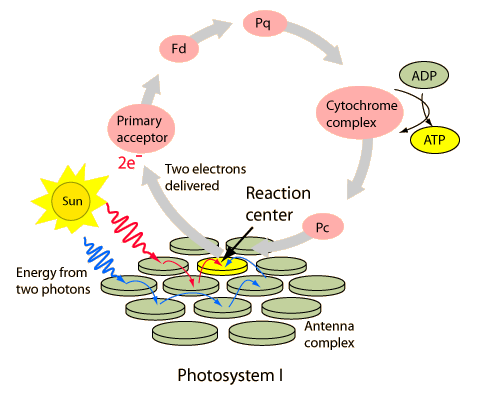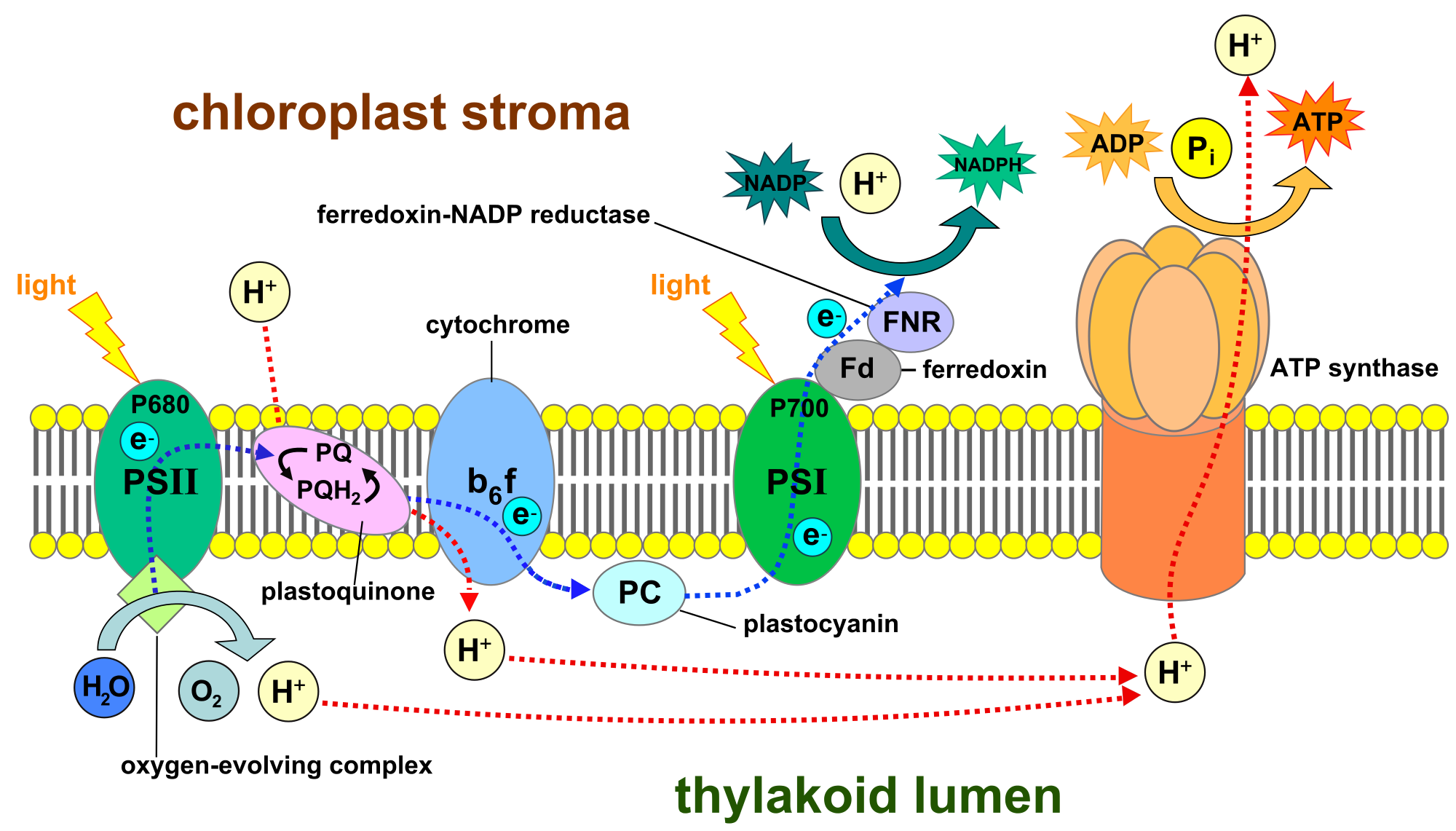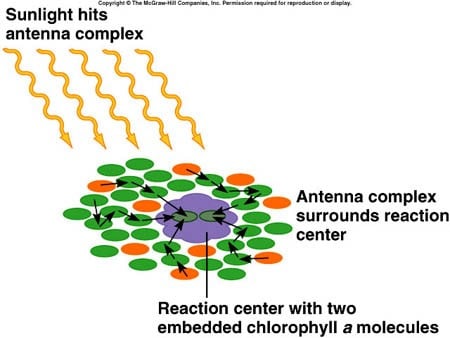Photosynthesis takes place in two phases:-
a) Photochemical phase or Light Reaction ( Hill reaction)
b) Biosynthetic phase ( Dark reaction)
a) Photochemical Phase:- This phase is dependent on light. The ATP and NADPH2 are synthesized. The water molecule undergo splitting ( photolysis of water ) resulting in the release of molecular O.2. The electron released during photolysis of water are picked by photocentre of photosystem II. On receiving a photon of light energy the photocentre expels an electron with a gain of energy.It is the primary reaction of photosynthesis which involve the conversion of light energy into chemical form. This phenomenon is also known as quantum conversion.
b) Dark reaction :- In this phase reduction of CO2 takes place result in the formation glucose. This is also known as the Blackman's reaction. The reaction do not require light. All the enzymes required for this process are present in the matrix or stroma of the chloroplast. Assimilatory powers ( ATP and NADPH ) produced during photochemical phase is used in the fixation of CO2.
b) Dark reaction :- In this phase reduction of CO2 takes place result in the formation glucose. This is also known as the Blackman's reaction. The reaction do not require light. All the enzymes required for this process are present in the matrix or stroma of the chloroplast. Assimilatory powers ( ATP and NADPH ) produced during photochemical phase is used in the fixation of CO2.




.PNG)
